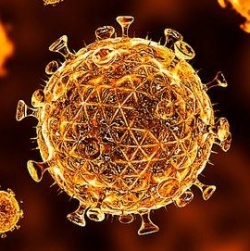
In 1951, a 4-year-old boy with leukemia contracted chickenpox. His liver and spleen, swollen by the cancer, soon returned to normal, and his elevated blood cell count fell to that of a healthy child.
His doctors at the Laboratory of Experimental Oncology in San Francisco were thrilled by his sudden remission, but the blessing was short-lived. After one month, his leukemia returned and progressed rapidly until the child’s death.
In the early 1900s, not much could be done for cancer patients. Unless surgeons could excise a tumor, the disease typically spelled a swift and inevitable end. But in dozens of published cases over the years, doctors noticed a peculiar trend: Struggling cancer patients sometimes enjoyed a brief reprieve from their malignancies when they caught a viral infection.
It was not a coincidence. Common viruses sometimes attack tumor cells, researchers discovered. For decades, they tried to harness this phenomenon, to transform it into a cancer treatment. Now, after a long string of failures, they are nearing success with viruses engineered to kill cancer.
“It’s a very exciting time,” said Dr. Robert Martuza, chief neurosurgeon at the Massachusetts General Hospital and professor of neuroscience at Harvard Medical School. “I think it will work out in some tumor, with some virus.” Candidates are already in advanced trials, he noted.
Cancer cells are able to replicate wildly, but there’s a trade-off: They cannot ward off infection as effectively as healthy cells. So scientists have been looking for ways to create viruses that are too weak to damage healthy cells yet strong enough to invade and destroy tumor cells. It has been a long, difficult challenge.
Researchers started down this road in 1904, when they discovered that women with cervical cancer temporarily recovered when given a rabies vaccination. By midcentury, physicians were administering live viruses to cancer patients. They tried infecting terminally ill children with polio and adenovirus. They injected patients with concoctions from the feces of normal children, from sick chickens, and from “feline spleen suspension” of rural kittens infected with “cat plague.”
These experiments proved ill fated. The cancer returned, or — in the worst cases — the injections themselves caused “the development of lethal infection in the host,” according to a 1964 American Journal of Pathology report.
